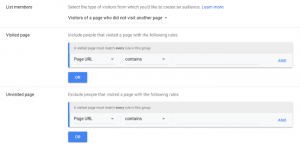
We are not talking about Gladys Knight’s and the Pip’s. We are talking Performance Improvement Plan.
What is a Performance Improvement Plan, AKA PIP? How does it work? What are your chances of surviving beyond the Performance Improvement Plan? Can an employee still have a successful career after a PiP?
The Performance Improvement Plan, aka PIP was originally designed to help the struggling employee by providing the tools needed to succeed at work.
- The Performance Improvement Plan documents key deliverables / behaviors against a baseline that describes success.
- The Performance Improvement Plan is usually prepared by the manager and signed by both the employee and the manager indicating an agreement on what success looks like.
- At the end of an agreed upon time frame, the manager rates success or failure against the deliverables / behaviors. Meet the deliverables and you are off the Performance Improvement Plan.
- If deliverables or behaviors are not met, the result is usually termination of employment. If this situation sounds dire, you would be correct. Things are not good. Fear not, the Performance Improvement Plan can be beat. HRNasty has your back.
If you are being put on a Performance Improvement Plan, count yourself lucky. A Performance Improvement Plan will spell out what success on your job looks like. If you are on a Performance Improvement Plan, then your manager took the time to give you a path to success and this is a good thing. Performance Improvement Plan’s are not used at the senior or executive levels. At these levels it is assumed you know what is up, what is expected and what success looks like.
Mindset of a manager putting an employee on a Performance Improvement Plan
Unfortunately, it has been my experience that the most managers putting an employee onto a Performance Improvement Plan are frustrated. Although the intent of a Performance Improvement Plan is to figure out a path to success, managers usually write the Performance Improvement Plan with a, dare I say it, “anticipation of failure” mentality. Below are a couple of reasons a manager with a bad attitude would adopt the use of such a plan.
- Performance Improvement Plan’s are put into place so that the company will have more protection in the case of a wrongful termination suit. With a clear path to success documented and signed, the court will have a hard time acknowledging “wrongful termination”. Psychologically, an employee will have a hard time pressing charges when they know they signed a document saying they were underperforming and didn’t meet specific expectations.
- The manager is on autopilot and has a “set it and forget it” mentality Once the Performance Improvement Plan is documented and signed by the employee, all the manager has to do is set a follow up for the end of the designated period and see what progress is made towards the deliverables. If the deliverables are not met, the decision is easy for the manager. At this point, the manager can literally say, “I gave the employee a clear path to success, and the employee failed”.
That all being said, there are managers who will use the Performance Improvement Plan the way it was designed and are sincere about making sure the employee is successful. This manager will usually check in on a regular basis and make sure that the plan is understood and there are no barriers in front of the employee’s success. This manager cares.
The key to success is to show you want to succeed. We do this by demonstrating effort and providing updates on your progress. We need to convince our manager to care about our performance. If a manager doesn’t see any effort, or doesn’t receive updates on the effort, it is easy to assume that we don’t care. Remember, without any updates or obvious visual cues, there isn’t any reason to believe that change is afoot. I have seen just as many employees attain success, as I have not.
Individual manager consideration:
Before I share my philosophy on beating the Performance Improvement Plan, I will provide a disclaimer. There are a number of managers and HR folks who feel strongly that it is very difficult to win back a confidence when performance has been in question. The thought process is that if we have lost the confidence of our manager, can we ever really get it back? This will be dependent on the manager, the role and the reasoning behind the Performance Improvement Plan. When we have lost faith in our friends, gaining that trust back depends on the severity of the crime and the visible intent and effort of the perpetrator. Some would say that if you are on a Performance Improvement Plan, you should just start looking for another job. Even if you get past the Performance Improvement Plan, convincing your manager that you have seen the light is an uphill battle. Some believe that as soon as the employee falters, there will be an “I told you the employee was hopeless and was going to fail” mentality held by the manager. You alone will have to judge your manager and the sincerity of the chance being given.
Beat the Performance Improvement Plan
Polygraph tests can be beat and so can Performance Improvement Plan’s.
Success or failure is going to depend on the cause of the PiP and the effort of the employee. We need to provide visible effort and updates throughout the length of the Performance Improvement Plan.
If you find yourself with a Performance Improvement Plan and a pen waiting for your signature, below are the steps needed to beat the Performance Improvement Plan.
- Take responsibility for prior behavior. From the manager’s perspective, this is the last chance. Managers are usually very frustrated when they are required to put an employee on a Performance Improvement Plan. Being defensive, blaming others (even if it isn’t our fault) or making excuses will not help our case.
- Ask for a day to think about it. Ask for an afternoon to think about it, but try to buy yourself some time. First thing the next morning, march into your managers office and explain the following. “I was wrong, I made a mistake, and I really want this to work. I like the company, I like the job, and I want to work with the team moving forward. I really appreciate the opportunity to make this work.” Give the manager the opportunity to hear these words and see sincerity. The first step of any 12-step program is to admit there is a situation.
- Always try to negotiate a longer Performance Improvement Plan. If you are put on a 2-week Performance Improvement Plan, ask for 4 weeks. If you are put on a 2-month Performance Improvement Plan, ask for 3 months. The longer you have to change the behavior, the better your chances of proving you can maintain change long term. It can be difficult to show real or consistent improvement in just 1 to 2 weeks. Always ask for extra time.
- Make sure your Performance Improvement Plan is measurable. We need specific examples of what success looks like listed in the Performance Improvement Plan. If the goal is to deliver a report, explain what will be in that report. Just stating that Employee will provide a report on Acme’s publishing numbers isn’t enough. Are we going to break that report out by geographic? Are we going to provide potential problems and solutions to increasing publishing numbers? You may provide a spreadsheet, but your manager may have been expecting a 20 slide Power Point with the spreadsheet embedded in the presentation. Google the term “SMART Goals” for examples of what your specific goals look like.
- Once the Performance Improvement Plan clock is ticking, make it a point to provide proactive communication to your manager. Right or wrong, your manager feels like they already put a lot of effort into your performance. For many managers this is a set it and forget it document, so WE need to drive our success. Regular progress reports provided on a consistent basis against deliverables will give your manager insight into your effort and results. This will provide a path to changing your manager’s mind around your performance.
- Do not give any excuses, ever. Zero. The last thing a manager wants with someone on a Performance Improvement Plan is an excuse. No one wants to hear about the dog that ate the homework from the student with a reputation for not turning in his or her assignments.
- In most cases THE TEAM NEEDS TO SEE A DIFFERENCE as well. This change could be in the quality of work, quantity of work, attitude, communication style, etc. If the manager and the team doesn’t see a change then we are back to the “day before” the Performance Improvement Plan was put into place. Your manager isn’t the only one looking for a change in behavior. Show your team you are making a sincere effort.
- Check in regularly with your manager and confirm that you are making progress in relationship to the plan. Ask for specific confirmation that in their opinion you are on track.
(297)
Report Post




